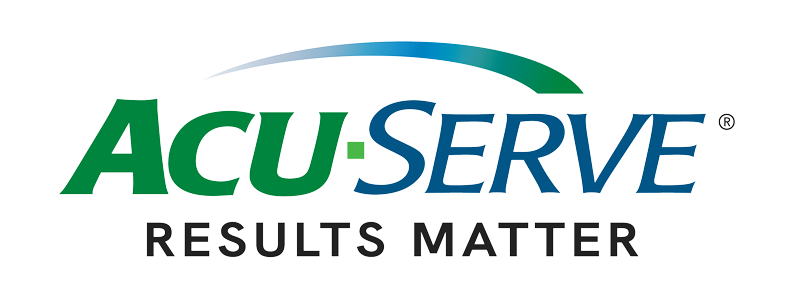How HME Providers Improve Collections and Minimize Write-offs?

Mounting write-offs and delayed collections often stem from manual billing and weak denial-management processes. When as much as 60% of rejected claims go unaddressed, Home Medical Equipment (HME) providers face strained cash reserves and tighter margins that limit growth.
To secure long-term financial stability, it is essential to grasp how HME providers improve collections and minimize write-offs. Leveraging modern revenue cycle management (RCM) solutions with systematic workflows ensures stronger cash flow and fewer financial setbacks.
Key Challenges in HME Collections
Collections remain one of the toughest areas for HME providers, with multiple points of failure across the billing cycle. Recognizing these challenges is the first step to improving collections and minimizing write-offs.

- Eligibility Gaps at Intake Process: Without real-time eligibility checks, providers risk delivering equipment without confirmed coverage, leading to denials or unexpected bills.
- Frequent Denials: Errors such as non-covered items, missing attachments, or coordination-of-benefits issues can push denial rates to 20–30% if not addressed.
- Ineffective accounts receivable (AR) Monitoring: When AR reports lack automation, past-due accounts can drift into write-off status before staff follow up.
- Weak Front-End Collections: Without clear cost estimates and flexible payment options, front-end collections fall short and self-pay write-offs rise.
How RCM Tools Improve Collections and Minimize Write‑offs
Technology plays a critical role in reducing claim errors and strengthening financial performance. By integrating modern RCM tools into your AR collection process and leveraging automation, providers like you can prevent denials, accelerate collections, and protect margins.
Here’s how these tools can further improve your business processes:
- Eligibility checks before delivery flag coverage gaps up to 72 hours in advance, preventing denials and avoiding unexpected patient bills.
- Error detection and automated appeals catch coding issues and missing documentation before submission, while auto-appeals recover much of the lost revenue from rejections.
- Accurate cost estimates and payment options give patients clear expectations and flexible plans, increasing upfront collections and reducing self-pay write-offs.
- Real-time dashboards and alerts segment unpaid invoices and trigger follow-up tasks before accounts cross into write-off territory.
- Integrated payment posting applies remittances automatically and generates timely patient billing, reducing manual errors and speeding up collections.
Best Practices to Improve Collections and Minimize Write‑Offs
Improving collections and reducing write-offs requires consistent execution, not just the right technology. The following best practices give providers a clear roadmap for building stronger financial outcomes and a more resilient revenue cycle.
Strategic Point‑of‑Service Collections
Collecting co-pays and deposits at the time of service establishes a foundation for prompt payments. Training staff to use scripted conversations and digital payment tools makes the process more efficient and less intimidating for patients.
This approach secures revenue upfront and reduces the likelihood of outstanding balances aging into bad debt. By capturing payments early, you can strengthen cash flow, reduce costs, and minimize the risk of costly write-offs.
Robust Denial Management
A structured denial management process includes logging denials, tracking trends, and addressing the most common rejection codes. Providers leverage technology to automate appeals, addressing high-volume denials quickly and consistently.
With fewer claims slipping through the cracks, you can recover revenue that might otherwise be written off. A proactive denial strategy reduces leakage in the AR collection process and improves overall reimbursement rates.
Accurate Coding and Documentation

Accurate coding supported by certified HCPCS Level II coders ensures claims align with payer rules. Attention to modifier distinctions, such as rental versus purchase, eliminates common billing errors and helps you maintain compliance with payer guidelines.
This accuracy directly lowers claim rejection rates, leading to faster reimbursements and fewer unpaid balances. Clean claims mean fewer denials, which translates to fewer write-offs.
Targeted AR Follow‑Up
Data analytics-driven AR management highlights payer groups or accounts at the greatest risk of nonpayment. Teams can then prioritize follow-up efforts based on these insights.
By addressing accounts before they age beyond 90 days, you can recover more revenue and prevent balances from turning into write-offs. Timely follow-up keeps AR levels healthy and manageable.
Continuous Staff Training and Accountability
Regular workshops, updated resources, and clear performance metrics ensure staff stay aligned with current billing processes and collection practices. Scorecards and incentives promote accountability and engagement.
Well-trained staff are more effective at collecting payments, resolving issues, and preventing denials. This consistency boosts collections and reduces the chance of unpaid claims slipping into write-off status.
Expert Outsourcing for Complex Claims
Outsourcing to RCM specialists can be the most effective solution for aged accounts or high-dollar claims. Experts bring advanced tools and appeal strategies to resolve complex cases in a constantly changing reimbursement environment.
Outsourcing prevents potential revenue loss by capturing dollars that might otherwise be abandoned. It also frees your internal staff to focus on active claims, further strengthening collections performance goals.
Benefits of Strong Collections & Low Write‑Offs
Understanding how HME providers improve collections and minimize write-offs shows why these strategies matter beyond just billing, including opportunities to benefit from small business tax deductions.

- Improved Cash Flow: Reliable reimbursements give providers more freedom to reinvest in staff, expand services, and plan for long-term growth.
- Lower Bad-Debt Expense: Reducing write-offs directly boosts net revenue, keeping margins healthy and making financial planning more predictable.
- Operational Efficiency: Efficient workflows supported by streamlined processes and automation minimize repetitive tasks, giving staff more time to focus on patient care.
- Enhanced Patient Experience: Transparent billing practices and flexible options build patient trust and satisfaction while supporting better retention.
Why Partner with ACU‑Serve
ACU-Serve is a true extension of your business, partnering with you to strengthen financial performance and drive growth. Our RCM solutions ensure HME/DME providers achieve clean claim rates by combining a data-driven approach with industry expertise.
- Software Optimization: We align with your existing system to correctly configure pricing tables, modifiers, and workflows, ensuring efficiency without added complexity.
- Deep HME/DME Expertise: Our years of specialized expertise in the HME industry allow us to ensure precise billing, simplify claims workflows, and strengthen revenue cycle performance.
- Compliance Oversight: Our onshore support meets payer requirements and keeps your processes fully compliant.
- Advanced Analytics-Driven Decision-Making: Our ACU-Insight tool provides real-time data that optimizes performance and streamlines revenue cycle operations.
Takeaway
Strong collections and minimal write-offs don’t happen by chance—they require the right tools, strategies, and partners.
With ACU-Serve’s RCM’s end-to-end solutions, you can focus on clean claims, denial prevention, and proactive AR management to safeguard financial health and build patient trust.
Now that you understand how HME providers improve collections and minimize write-offs, it’s time to implement these best practices. Book a meeting with us today and see how our tailored solutions strengthen your bottom line.
